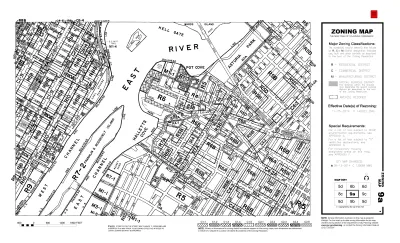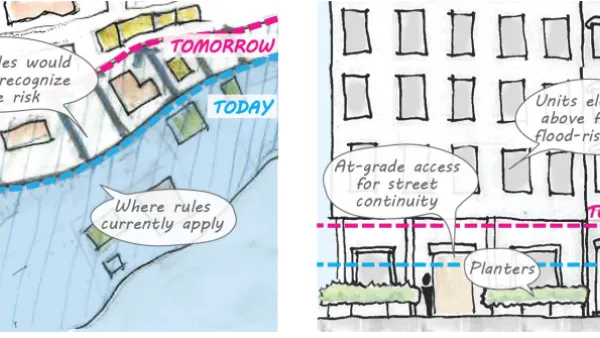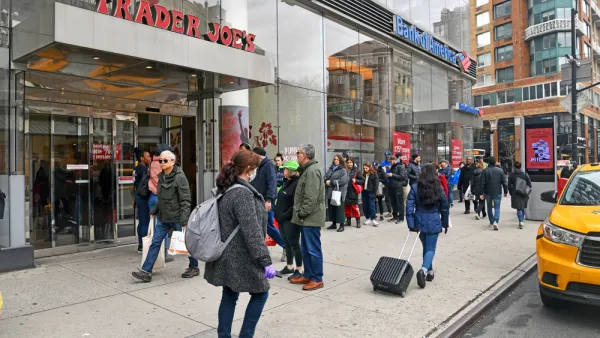On July 25, 1916, New York adopted its first Zoning Resolution, for the first time regulating the height, size and arrangement of buildings in the city.

 "Urban lore says that the massive Equitable Building at 120 Broadway in Lower Manhattan — a 40-story extrusion of a whole city block, unrelieved by setbacks and capable of housing 16,000 workers at once — was responsible for the enactment 100 years ago, on July 25, 1916, of New York City’s first Zoning Resolution," according to the introduction of a commemorative post by David W. Dunlap.
"Urban lore says that the massive Equitable Building at 120 Broadway in Lower Manhattan — a 40-story extrusion of a whole city block, unrelieved by setbacks and capable of housing 16,000 workers at once — was responsible for the enactment 100 years ago, on July 25, 1916, of New York City’s first Zoning Resolution," according to the introduction of a commemorative post by David W. Dunlap.
"But while the completion of the building in 1915 added fuel, the fire was already burning. New York, it had been agreed for some time, was spinning out of control."
The article goes into more details about the political climate that created the foundation on which George McAeny and Edward M. Bassett would build the 1916 Zoning Resolution.
The article also includes details of exactly what regulations the resolution imposed: "Under its rules, buildings in strictly residential zones were permitted to rise only as high as the streets in front of them were wide; a ratio of one to one, put another way. (Side streets in Manhattan are typically 60 feet wide.)"
"Also visible on the maps are “1¼” zones, “1½” zones, “2” zones and, in Lower Manhattan, a “2½” zone, where buildings could rise without setback for two and a half times the width of the street that they fronted," adds Dunlap.
The article includes quotes from Carl Weisbrod, the current director of the City Planning Department and the chairman of the City Planning Commission, who talks about the many revolutionary acts of the 1916 Resolution.
The American Institute of Architects' New York chapter is also commemorating the city's zoning code with a website called Zoning@100, featuring essays and news about events connected to the 100th anniversary of the zoning code.
[Postcard depicting the Equitable Building in Manhattan, designed by Ernest R. Graham. Image via Shutterstock]
FULL STORY: Zoning Arrived 100 Years Ago. It Changed New York City Forever.

Analysis: Cybertruck Fatality Rate Far Exceeds That of Ford Pinto
The Tesla Cybertruck was recalled seven times last year.

National Parks Layoffs Will Cause Communities to Lose Billions
Thousands of essential park workers were laid off this week, just before the busy spring break season.

Retro-silient?: America’s First “Eco-burb,” The Woodlands Turns 50
A master-planned community north of Houston offers lessons on green infrastructure and resilient design, but falls short of its founder’s lofty affordability and walkability goals.

Test News Post 1
This is a summary

Analysis: Cybertruck Fatality Rate Far Exceeds That of Ford Pinto
The Tesla Cybertruck was recalled seven times last year.

Test News Headline 46
Test for the image on the front page.
Urban Design for Planners 1: Software Tools
This six-course series explores essential urban design concepts using open source software and equips planners with the tools they need to participate fully in the urban design process.
Planning for Universal Design
Learn the tools for implementing Universal Design in planning regulations.
EMC Planning Group, Inc.
Planetizen
Planetizen
Mpact (formerly Rail~Volution)
Great Falls Development Authority, Inc.
HUDs Office of Policy Development and Research
NYU Wagner Graduate School of Public Service




























